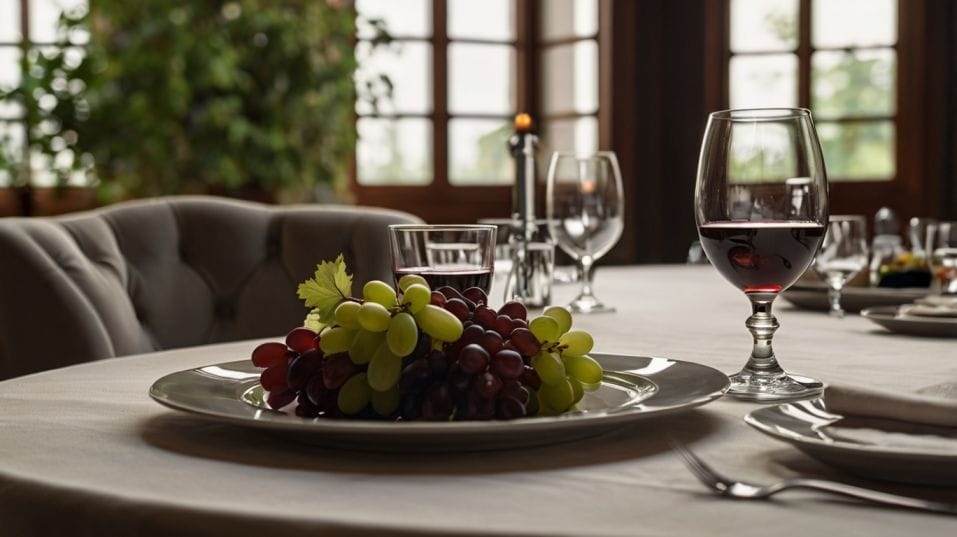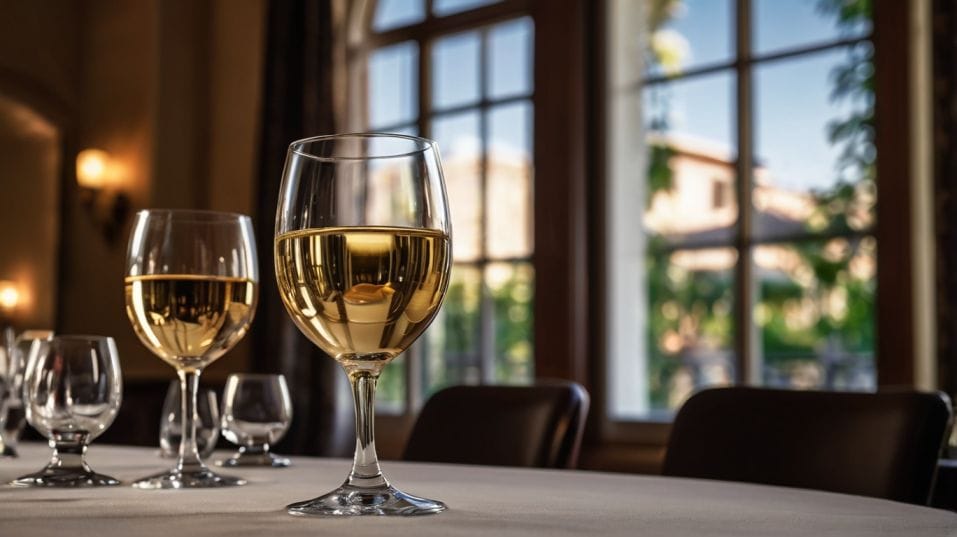Why Royalty Always Had Wine at the Table
Discover how royalty used wine with purpose—and how their timeless mindset can help you drink, serve, and enjoy wine with more confidence today.

What if the secret to drinking wine better isn’t in the bottle—but in the mindset behind the pour? Royalty didn’t serve wine just to indulge; they used it to shape mood, express power, and guide experience.
And while you don’t need a crown to pour with purpose, you can learn from the way they approached it. This isn’t about history—it’s about how to taste with confidence, starting now.
Wine as a Symbol—But Also a System
In every royal court, wine was a show of elegance, but also control. The monarch’s wine wasn’t just expensive—it was curated. Specific wines were chosen based on region, vintage, even political alliances.
And while you don’t need a sommelier’s vocabulary or a diplomatic strategy, there’s a powerful takeaway here: what you pour says something. About your taste, your values, and your attention to detail.
This is where your wine journey starts to shift. Instead of chasing “popular” bottles, ask better questions. What style do you love?
What grape consistently delivers for you? What kind of energy do you want in the glass—something calm, or something electric? Wine opens up when you stop treating it like a product and start treating it like a conversation.
The Rituals That Elevated the Ordinary
Royalty didn’t just have wine. They used it to pace, frame, and shape the entire experience of eating and gathering. Whether it was an elaborate feast or a private meal, wine served a function.
That mindset—slowing down, pouring with purpose—can transform your daily habits. It’s not about being precious. It’s about paying attention.

Simple Habits That Change the Glass
- Don’t pour wine straight from the fridge. Most whites and rosés show better after 10 minutes out of cold storage.
- Don’t ignore the glass. A wide bowl can unlock structure in reds, while a more vertical shape keeps aromatic whites focused.
- Let the wine breathe. Even five minutes in the glass can open up texture, soften tannins, or reveal subtler layers.
These aren’t elite techniques. They’re simple habits that help your palate evolve. And the more consistently you use them, the more control you gain over how your wine tastes.
Matching Wine to Mood—Not Just Food
Royal chefs and stewards didn’t just aim for “pairings”—they engineered experiences. They knew how to read the room.
When the meal was delicate, the wine stepped back. When it was hearty and aggressive, the wine brought tension and grip.
You can take this into your own kitchen without memorizing charts or pairing guides. It’s not about perfection—it’s about balance.
Learn to Read the Table
- Rich dishes (butter, cream, roast meats) need acidity to cut through.
- Delicate, herbal plates shine with wines that have lift and restraint, not oak or heat.
- Salty foods pull fruit forward in wines—try this with a dry sparkling or lean red and see how the flavor pops.
Forget textbook matches. Start paying attention to how the wine feels against the food. If the wine disappears or overwhelms, tweak. You’ll get sharper with practice, and over time, choosing the right bottle will feel like instinct.
The Taste of Time and Place
Historically, wine at the royal table wasn't just domestic—it was global. Monarchs traded and imported wine as symbols of reach and refinement.
From Bordeaux in English castles to Hungarian Tokaji in the Habsburg courts, every bottle carried a signature of place.
For you, this means expanding your comfort zone. If you only drink California Cab or New Zealand Sauvignon Blanc, you’re only seeing a fraction of what wine can be.
Start exploring classic regions with structure and identity—Loire, Rioja, Chianti, Douro, Etna.
These wines have survived centuries because they taste like somewhere. And when you start recognizing what place tastes like, your palate grows sharper, faster.
That’s what drinking like royalty actually means—not high price tags, but high context. Wines with a story, a climate, and a tradition behind them. And once you start connecting those dots, wine stops feeling random and starts feeling anchored.
Confidence Is the Ultimate Technique
For royalty, wine wasn’t about indulgence—it was about presence. What you chose to serve (and how you served it) showed the room what kind of leader you were.
You can apply the same thinking. Pouring wine isn’t just about offering a drink—it’s about setting a tone.
You don’t need to impress anyone. But you do want to be intentional. That’s how confidence grows—not from memorizing grape varieties, but from learning to trust your own taste.
That might mean decanting a bottle just because it feels right. It might mean serving Beaujolais with a Tuesday burger and knowing why it works. The point is: you’re in control.
And when you bring that clarity to your wine choices, people notice. More importantly, you notice. You start getting more from every glass.
Final Thoughts
Royalty kept wine at the table not for status, but because it elevated every part of the experience—flavor, conversation, timing, even decision-making.
When you borrow that mindset, wine becomes more than a bottle. It becomes a ritual that sharpens your attention and deepens your enjoyment.
So try something new tonight. Not because it’s trendy, but because you’re curious. Open a wine from a region you’ve never explored. Taste it slowly, let it change in the glass, and pay attention to what it adds to the moment.
That’s the heart of drinking like royalty: not excess, but presence. Not perfection, but intention. And it starts with your next pour.




